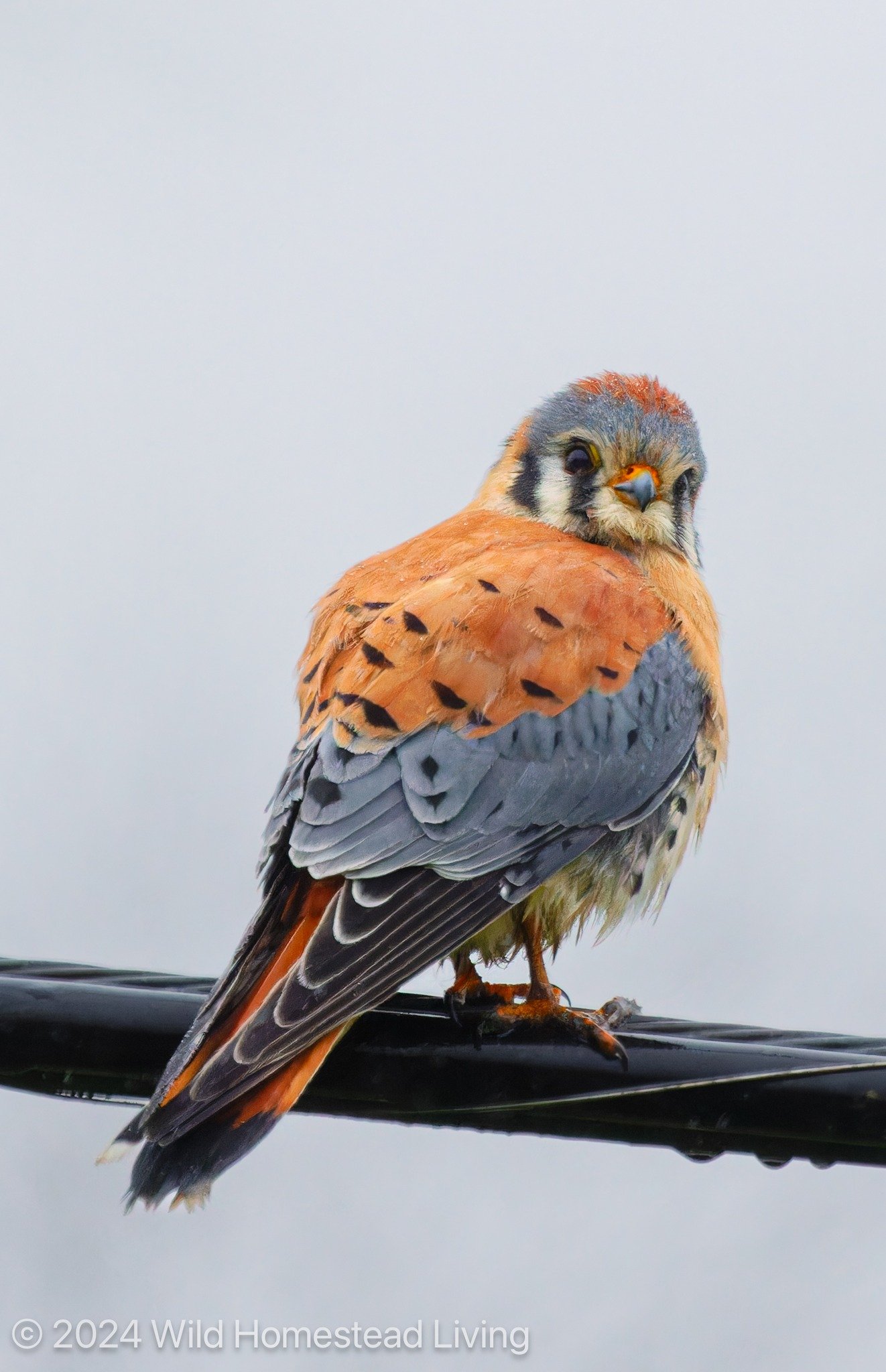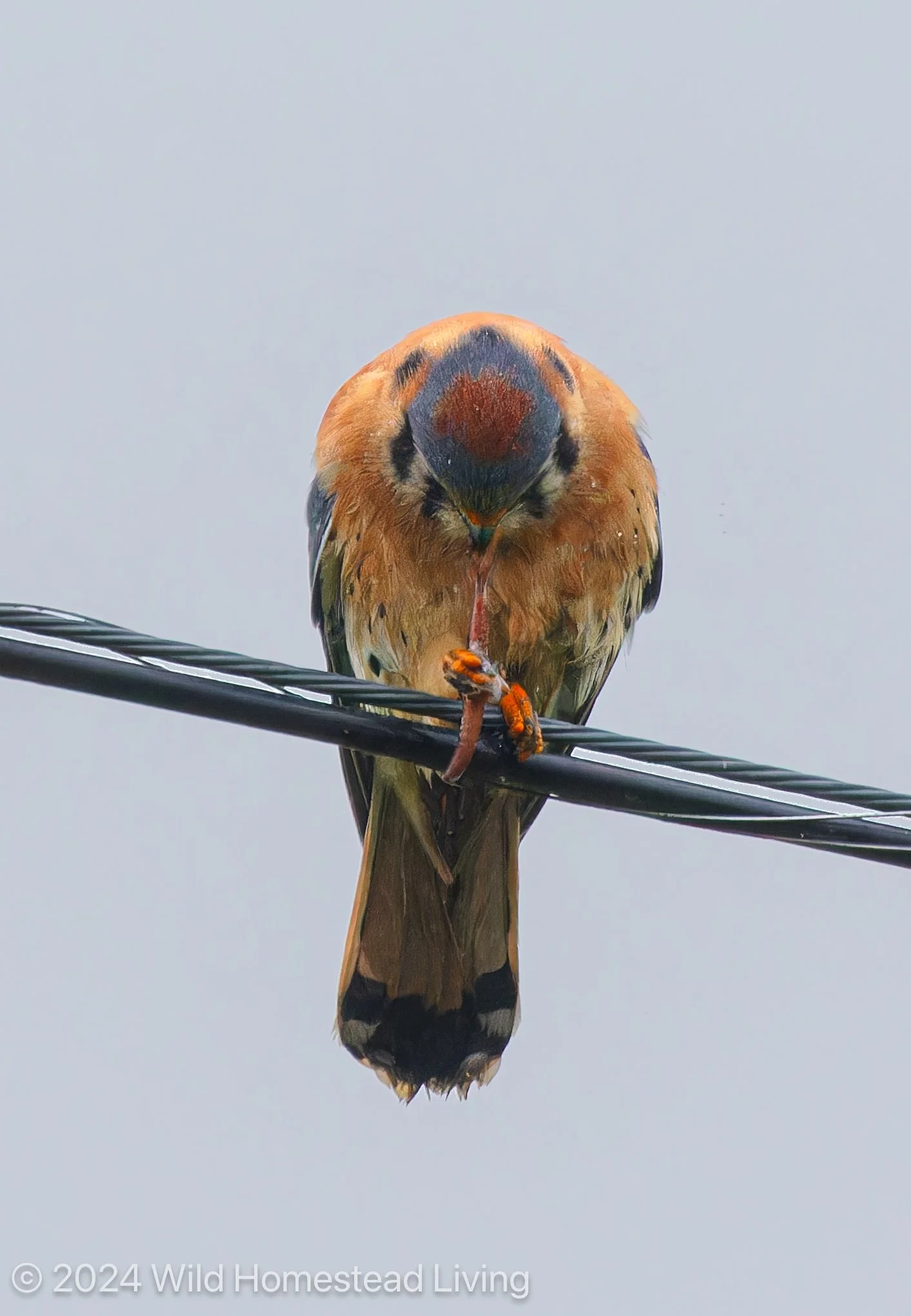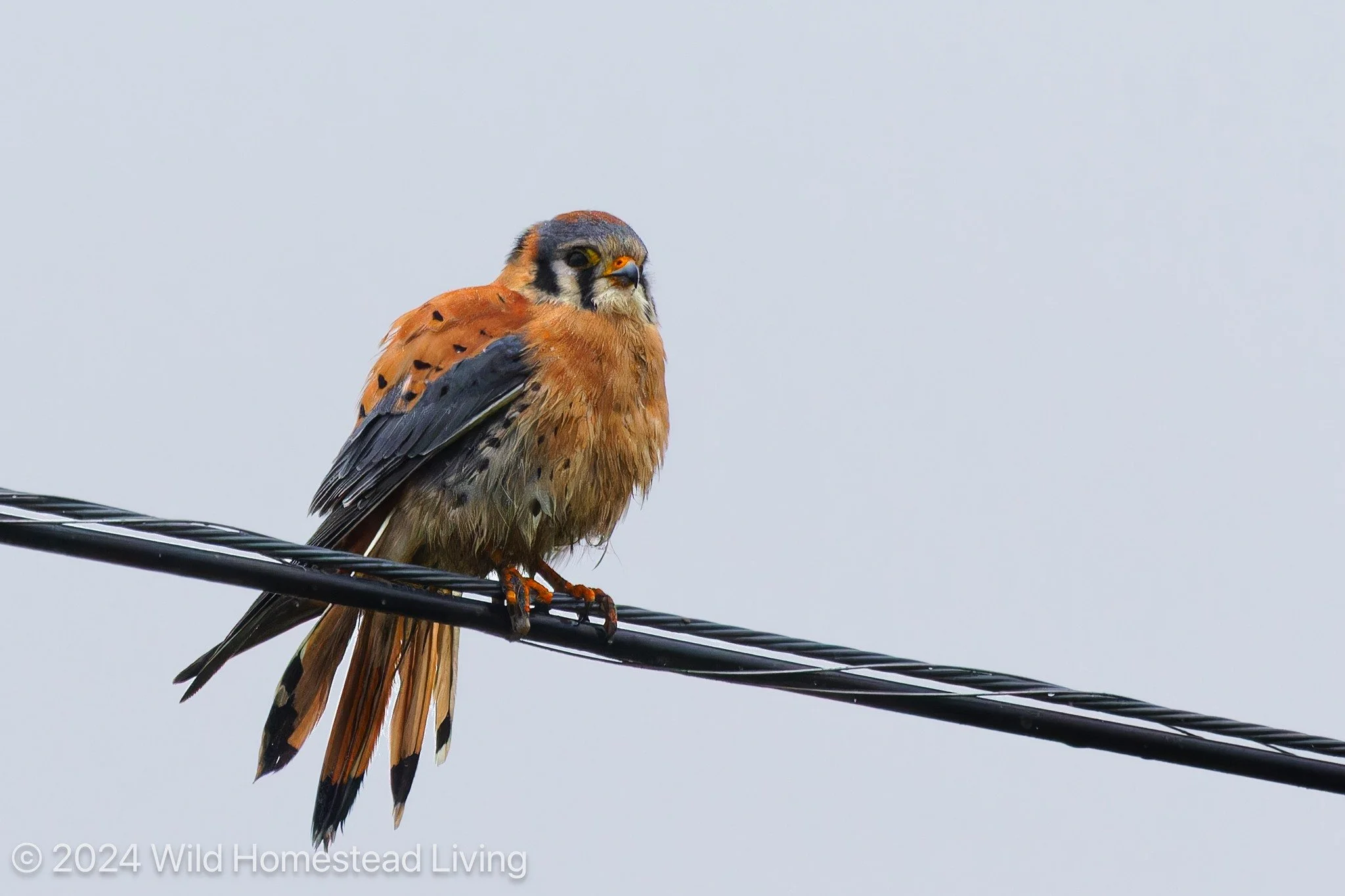Wild Notes: Kestrel Encounter
We want you to know if you buy something using the retail links in our posts, we may earn a small commission (at no extra cost to you). We will never recommend anything we don’t believe in. Not for all the butter in Sweden. You can read our full policy if you have questions or contact us directly.
Welcome to Wild Notes! In this series take a walk on the wild side with Kevin to see the natural world from the perspective of a seasoned naturalist. In this first article meet a pair of hunting American Kestrels.
As I drove along a backroad in between farm fields last week I spotted two small silhouettes sitting in the rain on a roadside power line. This wasn't far from where I had photographed an American Kestrel in early December, so I assumed it likely that this was the same bird and his mate. As I drew closer and could make out more detail I could clearly see that they were indeed male and female kestrels.
The female American Kestrel was sitting on an upper set of wires. She was about 25% larger than the male and a bit less colorful as the following photos will attest.
I snapped a couple of photos of the female and was about to roll on so as not to disturb the birds when the male unexpectedly flew down to a lower wire much closer to me. He gave me an intense glare (but to be fair, I'm not sure if these tiny falcons can ever NOT look intense) before turning his back on me and surveying the surroundings.
The male had been sitting on the same upper set of wires as the female, but when I photographed the female the male flew down to a lower wire as if he was curious about my car.
When the male focused on me his glare appeared to carry some anger, but this had a lot more to do with my preconceived human perceptions about close-set eyes, sharp brow ridges, and direct eye contact than it had to do with any emotion the bird was actually feeling toward me. In reality, he was probably just making sure I wasn't going to come any closer to him while he hunted.
After the bird sized my vehicle up, he turned around and showed off the striking color difference between male and female kestrels. His rusty shoulders, blue gray, black-tipped wings, and rusty, black-tipped tail were gorgeous even in the overcast, gray light.
The kestrel began surveying his surroundings and as he turned to look around I could see the false eye spots on the back of his head. He eventually looked toward the ground and dove down to catch something.
It was clear the male kestrel was hunting, and that he was no longer concerned with me, so I just stayed put. Eventually, I saw his focus lock onto something below him and he quickly dove to the ground. The autofocus in my (very old) lens struggled to keep up with him, so as I looked through the lens I just saw a blurred image of what appeared to be a long tail dangling from his talons as he flew back up to the wire he had just left. My mind struggled to identify what the bird might have caught- ...a vole? No, the tail is too long... a deer mouse?... no, wrong habitat... - and then the bird landed and my lens caught up with him. The mighty hunter had captured... an earthworm, which he proceeded to devour segment by segment until it was gone.
I couldn't make out what the kestrel had caught until he flew back up to his perch and my camera was able to focus on him. He had captured a sizable earthworm.
The kestrel ate the worm bit by bit, easily breaking off segments with his sharp beak.
I watched as the kestrel swallowed the last, large section of worm whole.
I guess I shouldn't have been surprised by this observation. I know kestrels often eat things like grasshoppers and moths, and I'm almost certain I have read about them eating earthworms before, but I'm not sure my brain accepted the information. When you have talons and a razor-sharp beak at your disposal it just seems odd that you would take down the same prey that robins casually collect.
As the kestrel slurped down the last of the worm I noticed that his foot was covered in a sludge of worm slime. When I looked at photos I had taken prior to his capturing the worm, I noticed that he already had a bit of slime present. So what I witnessed had not been his first successful worm hunt of the day.
After his meal the kestrel had a noticeable blob of worm slime on his right foot.










